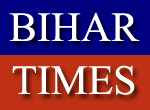|
17/10/2015 Has media coverage of Bihar election reached its saturation point?
|
Perhaps never before in the history of Bihar so many journalists, academics and researchers from India and abroad came to the state to cover an Assembly election. Reporters, special correspondents, senior editors, cameramen etc of almost all the newspapers and electronic media of the country have converged to the state capital, Patna, from where they are fanning out to different destinations. Possibly the first among them to visit the state in this election season is Prof Nakamizo from University of Kyoto (Japan), a frequent visitor to Bihar. As he has spent quite a time in Bihar, especially in Murho, the native place of B P Mandal in Madhepura district, he once again made it a point to come over to Patna in September. So far India is concerned the presence of quite a few mediapersons from Kerala––farthest from Bihar––has come as a surprise of a sort. One of them working in Delhi bureau of a Malayalam daily ran into this correspondent early this week. When asked why are you so interested in covering the Bihar election he replied that while people here do not know the name of Kerala chief minister in his state the politics of Bihar is being closely watched. He said that he is not alone. At least 10 journalists, including TV crews, from his state are at present in Bihar. Most of them have gone to different districts to have first hand feeling of the situation here. Their number may further increase. He then went on to make a pinching comment. “You know I did a story on how hunger is no more an issue in Bihar as leaders are more interested in asking whether you eat meat or not,” he said tongue-in-cheek. Television anchor Ravish Kumar is busy in doing apparently non-political stories, but his message seems to be more powerful. For example, in his Prime Time programme (9:00 PM) on Oct 13 he highlighted how the distribution of cycles to girls have transformed the society. Without making any reference to counter the image of the “Jungle Raj-II” he went on to show in his hour-long programme as to how thousands of girls, even from very poor rural families, are fearlessly going to schools, inter-colleges, coaching centres even in desolate villages of Bihar and even as early as 6:00 in the morning. Why is it that this big transformation is not visible, he wondered. A series of programmes presented by him is very different from what other scribes are doing. Others prefer to tour Maoists’ hit pockets or debate the caste divide, or how the Asaduddin Owaisi factor got punctured, as he had to struggle to find candidates and is thus now contesting just six seats. A prominent Kashmiri journalist working in a national daily has filed stories from the deep interiors of Bihar. But he is not the first. Another journalist of Kashmiri origin, who is Delhi bureau chief of a national daily, did come here to cover the last year’s Lok Sabha election too. Unlike in the 2014 parlimanetary election when the media had to cover the entire country they are at present confined only to Bihar. So the state is getting perhaps more coverage than it deserves. But the mediapersons have their own compulsions. How can they ignore when the prime minister of the country will be addressing 35-40 rallies in the state having 38 districts? This is apart from seven official and political meetings he addressed in Bihar between July 25 and September 5. As much is at stake for Nitish Kumar, Lalu Prasad, Narendra Modi and Sonia Gandhi the election of Bihar has rightly been termed as mother of all electoral battles. In the last couple of months or so Modi has addressed more public meetings in Bihar than all the prime inisters in the last couple of decades. Of the 40 star-camaigners pressed into service by the BJP half of them are Union ministers. And each one of them are supposed to address at lest 50 election rallies. Leaders like the party chief Amit Shah and LJP leader Ram Vilas Paswan may end up crossing the century mark. Shah has so far already addressed 40 rallies. So intense is the carpet bombing of Bihar that the duo of Nitish Kumar and Lalu Prasad stand nowhere in matching their air-superiority. But as the air and naval engagements only play supportive role and much depends on the ground offensive at present it is difficult to say as to which of the two sides have an edge.
|
|


